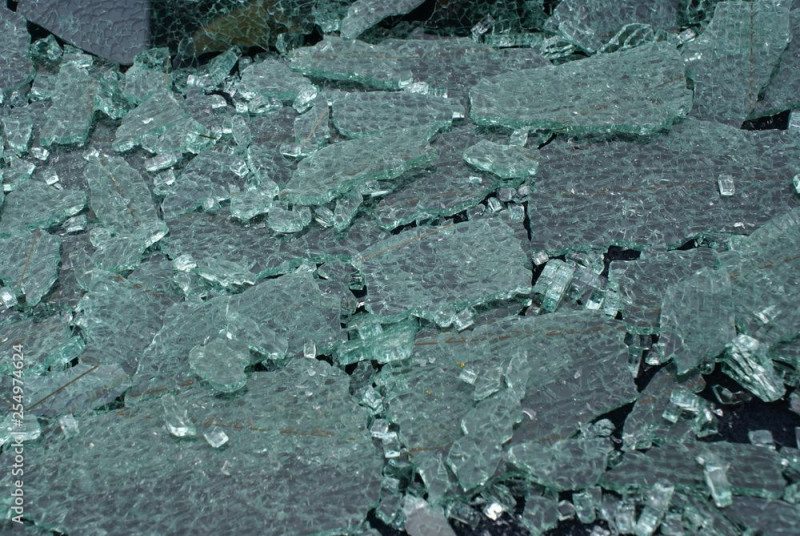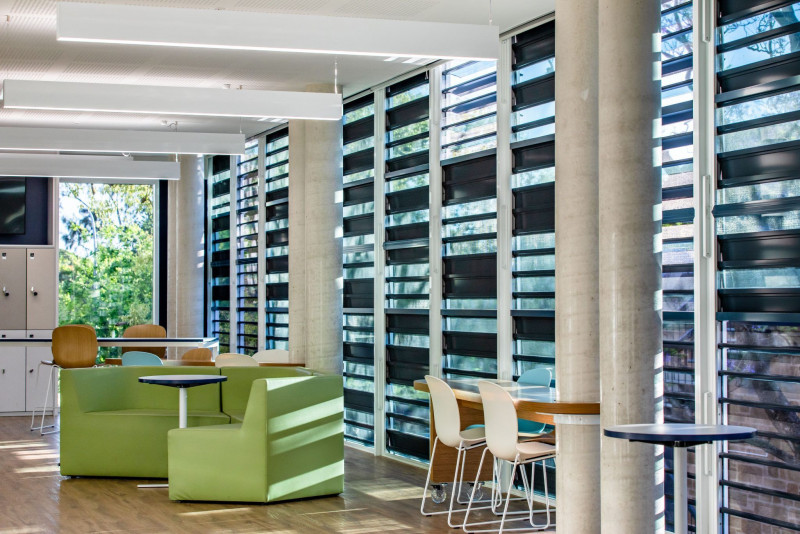-
Australia
Copyright © 2025 Powered by BCI Media Group Pty Ltd
Confirm Submission
Are you sure want to adding all Products to your Library?
Contact Detail

When specifying safety glass for construction projects, there are two options that are recommended: laminated glass and toughened glass. At first glance, these two types may seem indistinguishable, but they both have unique and distinctive qualities that make them suitable for different applications.
Laminated glass is formed when two or more layers of glass are bonded together with tear-resistant plastic film interlayers. This can be either polyvinyl butyral (PVB) or ethylene-vinyl acetate. It's designed to absorb the energy of a person or item striking it, preventing the pane from being penetrated and any potential injury from flying glass shards.
Toughened glass, also known as tempered glass, is made from regular annealed glass that gets its safety properties from a heating and cooling procedure called tempering. The process involves heating the glass and cooling it immediately. Quickly cooling the incredibly hot glass causes the outside of the glass to harden quicker than the centre. This process leaves the center to tension making the glass significantly stronger and more durable than ordinary glass.
Each has its own advantages for its particular purpose but the key difference here is when the glass shatters. Toughened glass fractures into many small pieces whilst laminated glass remains in place when broken. That’s why laminated glass is used for skylights, balustrades, curtain walls, and other overhead or sloped glazing installations. If it breaks, it prevents the glass from falling and harming anyone walking under it. The safety and security benefits of laminated glass have also been recognised by Australian education institutions. Based on their own design standards, they have mandated the use of laminated glass for all external and internal glazing up to door height.
Here are more benefits that you can enjoy from using laminated glass:
1. Ensures safety from injury
Ordinary window glass is fragile and breaks into long, sharp fragments that can inflict serious harm. Laminated glass can absorb the impact energy and resist penetration because the broken glass pieces stay bound to the interlayer. This greatly reduces the risk of injury from falling glass. It’s one of the top reasons why laminated glass is increasingly specified in compliance with building codes and is required for vehicle windshields worldwide.
2. Provides security
Laminated glass, which consists of many glass sheets and interlayers, can provide optimum security. It can withstand break-in attempts by burglars who frequently smash windows to access door and window knobs. Laminated glass can also withstand bullets and bomb blasts. In modern correctional facilities, traditional prison bars have been replaced with laminated security glass for a more humane setting.
3. Helps reduce noise
Laminated glass has a greater sound reduction index than monolithic glass of equivalent thickness. Its interlayer’s “viscoelastic” quality can effectively reduce sound between the frequencies of 125Hz and 4,000Hz. Laminated glass can also reduce the coincidence effect that occurs at specific frequencies in monolithic glass. Even using at least one layer of laminated glass can significantly enhance the noise reduction properties of IG units.
4. Protects from damaging UV rays
The chemical reaction triggered by UV radiation is the main reason why furniture and artwork in homes and buildings deteriorate over time. With laminated glass, UV-absorbing chemicals in the interlayer can block practically all of these harmful UV rays.
5. Promotes energy efficiency
Tinted laminated glass can help control the amount of sunlight, heat, and glare to a more comfortable level. Reflective-coated glass or low-E glass can be combined with heat-absorbing glass tints in laminated glass. This makes it an energy efficient solution in lowering air conditioning costs.
6. Offers protection from environmental elements
Laminated glass provides additional protection for homes and buildings that are vulnerable to severe weather conditions or by natural calamities. Earthquakes and flying debris carried by strong winds can damage laminated glass but this will stay firmly in its frame. This helps reduce the risk of injury from falling or scattered shards.
7. Versatile for various designs
Laminated glazings can come in different varieties: annealed, toughened, heat-strengthened, spandrel, wired, patterned, coloured, and reflective. They can also be in a flat or curved design. The interlayers can have additional tint or the opacity can be enhanced for aesthetic or privacy requirements. High-resolution digital printing can also be applied to the interlayer before lamination. Since the design is within the glass, it is protected from scratches, stains, fingerprints, or strong cleaning agents.
8. Long-lasting durability
Well-made laminated glass is easy to clean and maintain, similar to cleaning ordinary glass. Its colour and strength remain consistently durable over time whilst providing safety and security benefits.
9. Minimises visual distortion
“Roller wave” distortion happens during the tempering process of heat-strengthened glass. The reflection on the glass appears warped. Glazing the laminated glass in an annealed condition will prevent this distortion.
10. Easy to install
Standard-sized laminated glass panels can be cut to size, drilled or notched for easy installation, whereas toughened glass cannot be cut after it has hardened. Toughened glass also takes more time to manufacture because of its production process. This takes longer to replace and install if it breaks, compared to laminated glass.

The advantage of Safetyline Jalousie louvres with laminated glass
Australian construction standards prohibit the use of laminated glass in conventional-designed louvres because they have two exposed edges that are open to delamination over time. Safetyline Jalousie’s louvres on the other hand, have the advantage of being framed on three sides. This reduces this risk of delamination which permits the usage of laminate glass in the system. More importantly, it complies with the regulations set out by AS1288-2006 Glass in Buildings – Selection & Installation.
For designers and construction project managers, specifying our louvre window systems can offer the tremendous benefits of laminated glass whilst providing optimum ventilation for healthier air quality. Safetyline Jalousie’s key performance indicators have also been proven to meet the most stringent building and construction standards, opening up opportunities for louvres to be used in more applications than ever before.
For examples of our louvre windows with laminated glass, including schools and high-rise towers, view our Project portfolio here. For further information about our louvre products, get in touch with us on 1300 863 350 or book a free consult here.



